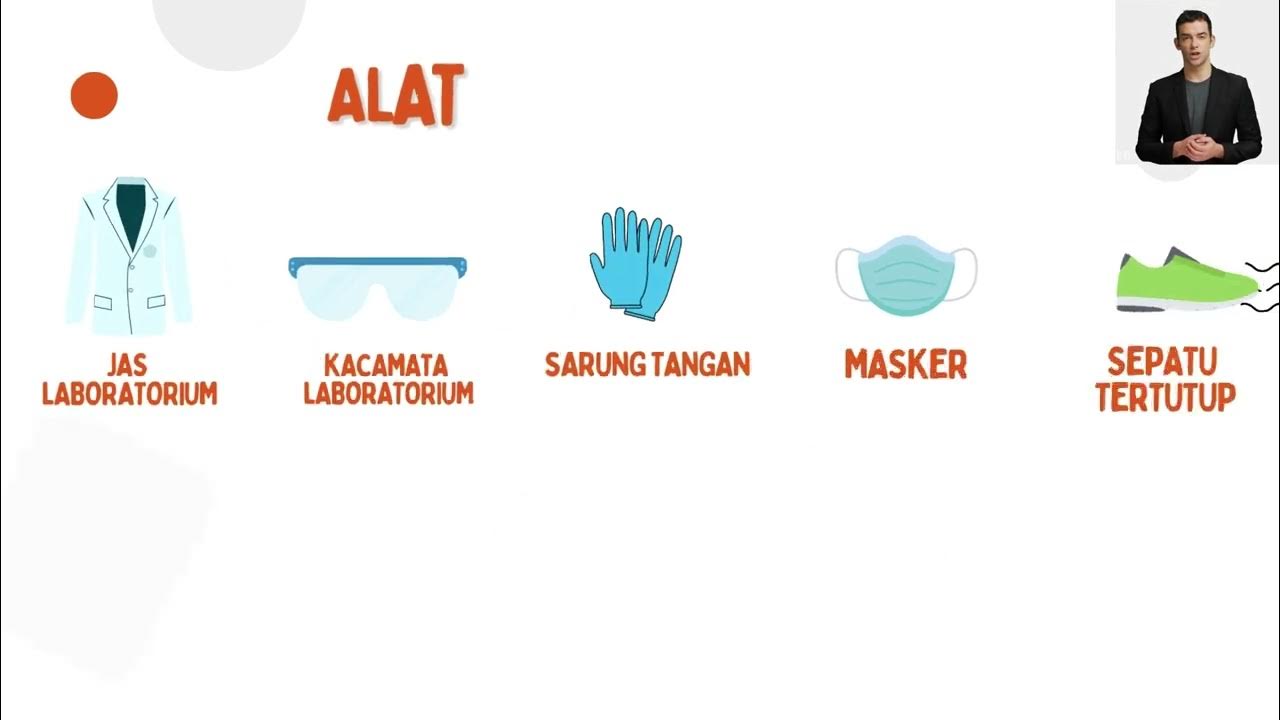Safety in the Veterinary Hospital- Disc 1
Summary
TLDRThis video highlights the importance of safety in various areas of a veterinary hospital, emphasizing proper lifting techniques, the safe handling of hazardous chemicals, and the use of personal protective equipment. It covers storage safety, chemical handling protocols, and the risks associated with the laboratory environment. The video also provides guidelines for safely restraining animals during exams to prevent bites and scratches. It underscores the importance of proper labeling, using protective gear, and being aware of potential hazards to prevent workplace injuries and ensure a safe environment for both staff and animals.
Takeaways
- 🏥 **Proper Lifting Techniques**: Hold heavy objects close to your body and use your legs to lift, not your back.
- 📚 **Storage Area Safety**: Keep aisles clear and store hazardous materials on lower shelves to prevent accidents.
- 🧪 **Chemical Handling**: Always follow manufacturer's instructions for using, storing, and disposing of chemicals.
- 🥽 **Personal Protective Equipment (PPE)**: Use appropriate PPE when handling chemicals to prevent skin and eye irritation.
- 🚫 **Avoid Mixing Chemicals**: Never mix chemicals that are not designed to be mixed to prevent toxic fumes or hazardous compounds.
- 👀 **First Aid for Chemical Splashes**: In case of a chemical splash, immediately rinse the affected area and seek medical attention if necessary.
- 🔬 **Laboratory Safety**: Treat all samples as potential hazards and follow proper disposal procedures for biohazardous waste.
- 🩺 **Handling Sharp Objects**: Use sharps containers for needles and other sharp objects and never recap needles.
- 🐾 **Animal Restraint**: Minimize the owner's role in restraining pets during potentially painful procedures to prevent bites.
- 🧹 **Cleaning Exam Rooms**: Use secondary containers for cleaning solutions and ensure they are properly labeled with contents and warnings.
- 🩹 **Immediate First Aid**: In case of animal bites or scratches, take immediate first aid steps and notify a supervisor.
Q & A
What are the key principles to follow when lifting heavy objects in a hospital storage area?
-Hold objects close to your body, use your legs instead of your back, use common sense to get help if an object is too heavy, and use lifting aids like dollies.
Why is it important to keep storage areas organized in a hospital?
-An organized storage area reduces the risk of trips and falls by keeping aisles clutter-free and ensures hazardous materials are stored on lower shelves, reducing the chance of them falling or spilling.
How should chemicals be handled in a veterinary hospital?
-Chemicals should be handled with respect, following the manufacturer's instructions and safety precautions, including reading warning labels and using the appropriate personal protective equipment.
What should you do if chemicals are splashed into your eyes?
-Immediately rinse your eyes thoroughly for at least 10 minutes and notify a supervisor to get additional medical attention if necessary.
Why is it necessary to label containers when transferring chemicals from their original containers?
-It is necessary to label containers to reflect the product and provide appropriate hazard warnings, which is required by law for hazardous chemicals.
What are some safety concerns in a veterinary laboratory?
-Safety concerns include potential contamination from parasites and pathogens, handling of blood, urine, feces, tissue, and fluid samples, and the use of needles and other sharp objects.
How can you prevent injuries from animal bites or scratches in an exam room?
-Follow restraint guidelines, maintain control of the animal's head, use a towel or blanket for protection, and assess the animal's disposition before handling.
What should be done if someone gets bitten or scratched by an animal in the exam room?
-Immediate first aid steps should be taken, including notifying a supervisor who can then notify medical authorities if necessary.
Why is it important to use secondary containers properly in exam rooms?
-Secondary containers must be marked with contents, lot number, expiration date, and health warnings to ensure the correct handling and use of the stored materials.
What precautions should be taken when using cleaning and treatment solutions in exam rooms?
-Wear appropriate protective gear such as goggles, face shields, and gloves, and follow the material safety data sheets for proper precautions.
How can you prevent lifting injuries in the exam room?
-Use a lift table when available for large dogs, and get help from another staff member when lifting without a lift table.
Outlines

Cette section est réservée aux utilisateurs payants. Améliorez votre compte pour accéder à cette section.
Améliorer maintenantMindmap

Cette section est réservée aux utilisateurs payants. Améliorez votre compte pour accéder à cette section.
Améliorer maintenantKeywords

Cette section est réservée aux utilisateurs payants. Améliorez votre compte pour accéder à cette section.
Améliorer maintenantHighlights

Cette section est réservée aux utilisateurs payants. Améliorez votre compte pour accéder à cette section.
Améliorer maintenantTranscripts

Cette section est réservée aux utilisateurs payants. Améliorez votre compte pour accéder à cette section.
Améliorer maintenantVoir Plus de Vidéos Connexes

Construction Safety: Chemical Safety and Hazard Communication

Brock Transportation of Chemicals, Compressed Gases and Cryogens

INDUSTRIAL NEW EMPLOYEE SAFETY ORIENTATION

PENGENALAN ALAT-ALAT LABORATORIUM KIMIA DAN KEAMANAN & KESELAMATAN KERJA (K3) DI LABORATORIUM KIMIA

Keselamatan Kerja di Laboratorium IPA Mata Kuliah Pendalaman Materi IPA

Safe Chemical Handling / Lab Safety Video Part 5
5.0 / 5 (0 votes)
